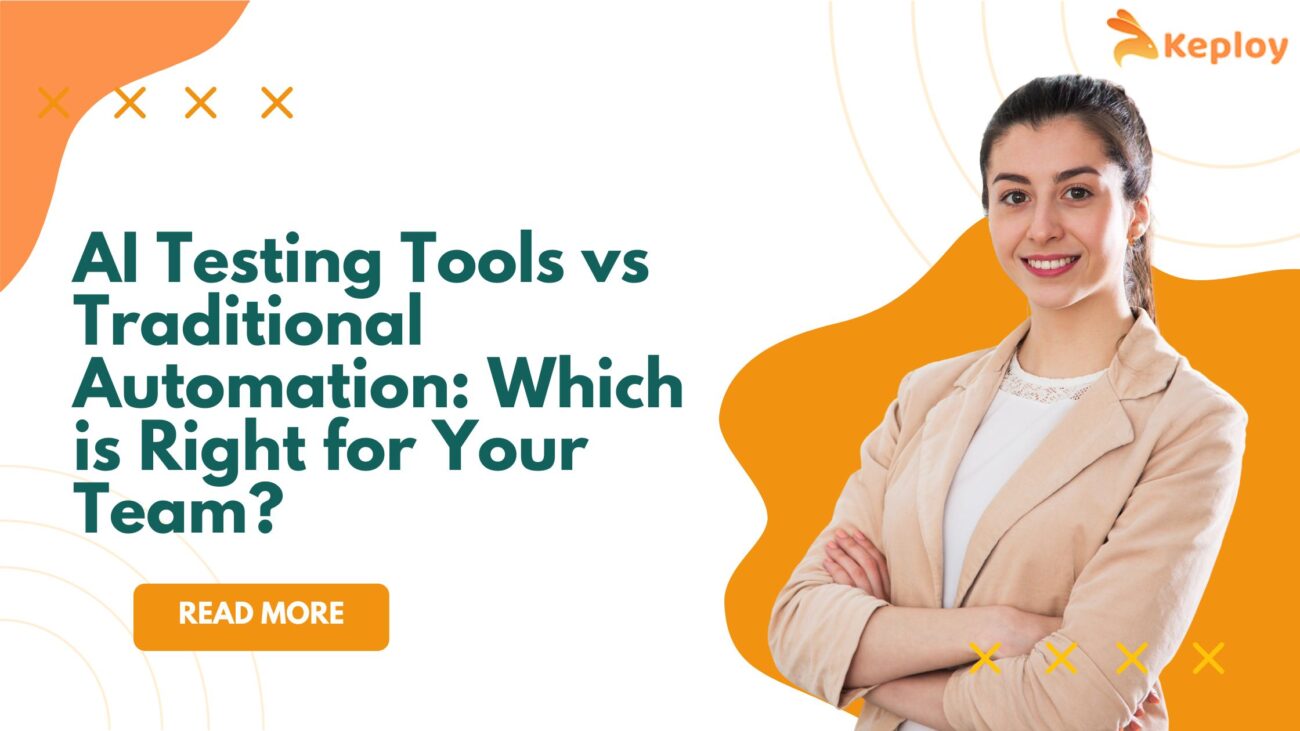In the ever-evolving world of software development, testing plays a pivotal role in ensuring product quality. For decades, traditional automation testing has been the backbone of quality assurance, allowing teams to run repeatable tests and catch bugs before they reach production. However, with the rise of artificial intelligence, AI testing tools are reshaping the landscape, offering smarter, more adaptive ways to ensure software reliability. But how do these approaches compare, and which is the right choice for your team?
Understanding Traditional Automation Testing
Traditional automation testing relies on predefined scripts and frameworks. Testers create step-by-step instructions to validate specific functionalities. These scripts can be reused across releases, saving time compared to manual testing, especially for repetitive regression tests.
For example, in web or mobile applications, testers often write scripts to check login processes, form submissions, or API integrations. While effective, this approach comes with limitations:
- Maintenance overhead: Whenever the application changes, automation scripts often break and require updates.
- Limited adaptability: Traditional automation executes what is scripted—it cannot dynamically adapt to unforeseen scenarios.
- Manual setup for test data: Teams must manually provide input data or rely on static datasets, which may not cover all real-world cases.
Despite these drawbacks, traditional automation is still widely used because of its reliability, predictability, and familiarity to QA teams.
The Rise of AI Testing Tools
AI testing tools leverage machine learning and intelligent algorithms to improve and accelerate testing. Unlike static scripts, AI can analyze patterns in code, past bugs, and user behavior to generate optimized test scenarios automatically.
Here’s what sets AI testing apart:
- Smart Test Case Generation
AI can automatically generate relevant test cases by analyzing code changes, usage patterns, and historical defect data. This eliminates the repetitive task of writing tests for every minor update and ensures broader coverage. - Adaptive Testing
AI testing tools adjust dynamically to changes in the application. For instance, if the UI layout changes, the AI can identify affected areas and update the corresponding tests, reducing maintenance effort. - Test Data Generation
One of the challenges in traditional testing is creating realistic, varied test data. AI tools act as a test data generator, producing diverse input values that mimic real-world scenarios, improving the accuracy of test results. - Predictive Defect Detection
AI doesn’t just test—it predicts. By analyzing past defects and usage trends, AI testing tools can highlight areas of high risk, allowing developers to focus on components most likely to fail. - Mocking and API Testing Support
Modern software relies heavily on APIs. Understanding what is API testing is crucial here: it involves validating the requests, responses, and behavior of APIs. AI testing tools simplify this by automatically generating mocking responses for external services, enabling seamless integration testing even when external APIs are unavailable.
Platforms like Keploy exemplify the power of AI in testing. Keploy captures real-world application traffic to automatically generate test cases and mock responses, reducing manual effort while ensuring accurate, realistic testing scenarios.
Traditional Automation vs AI Testing: Pros and Cons
Traditional Automation:
- Pros: Reliable for repetitive tests, predictable results, widely supported tools, and frameworks.
- Cons: High maintenance, limited adaptability, requires manual test data creation, slower response to changing application logic.
AI Testing Tools:
- Pros: Adaptive and intelligent testing, automated test case and data generation, predictive defect detection, enhanced API testing with mocking responses.
- Cons: Higher initial setup and learning curve, dependency on quality historical data, may require cultural adaptation in teams used to manual or traditional automation methods.
Which Approach is Right for Your Team?
The decision depends on several factors:
- Project Complexity
If your application is relatively stable with minimal changes, traditional automation may suffice. But complex, rapidly evolving applications benefit from the adaptability of AI testing tools. - Team Expertise
Teams familiar with coding and traditional automation frameworks may adopt AI tools gradually, integrating them into CI/CD pipelines. AI testing is particularly advantageous for teams ready to embrace predictive analytics and automated test data generation. - Testing Goals
If your primary goal is speed, coverage, and proactive defect detection, AI testing tools provide a significant advantage. Conversely, for standardized regression or smoke tests, traditional automation remains highly effective. - Budget and Resources
AI tools often require a higher initial investment and sometimes specialized skills. However, the long-term ROI in reduced maintenance, faster releases, and better defect detection often outweighs the upfront costs.
Conclusion
Both traditional automation and AI testing tools have their place in modern software development. Traditional automation excels in predictability and reliability, while AI testing tools offer adaptability, intelligence, and efficiency, especially in complex, rapidly changing systems.
By understanding what is API testing, leveraging test data generators, and utilizing modern solutions like Keploy, teams can combine the strengths of both approaches. The ultimate choice depends on your team’s goals, project complexity, and willingness to embrace AI-driven innovation.
In a world where speed and quality must coexist, AI testing tools are no longer just an optional upgrade—they’re a strategic advantage for forward-thinking software teams.
